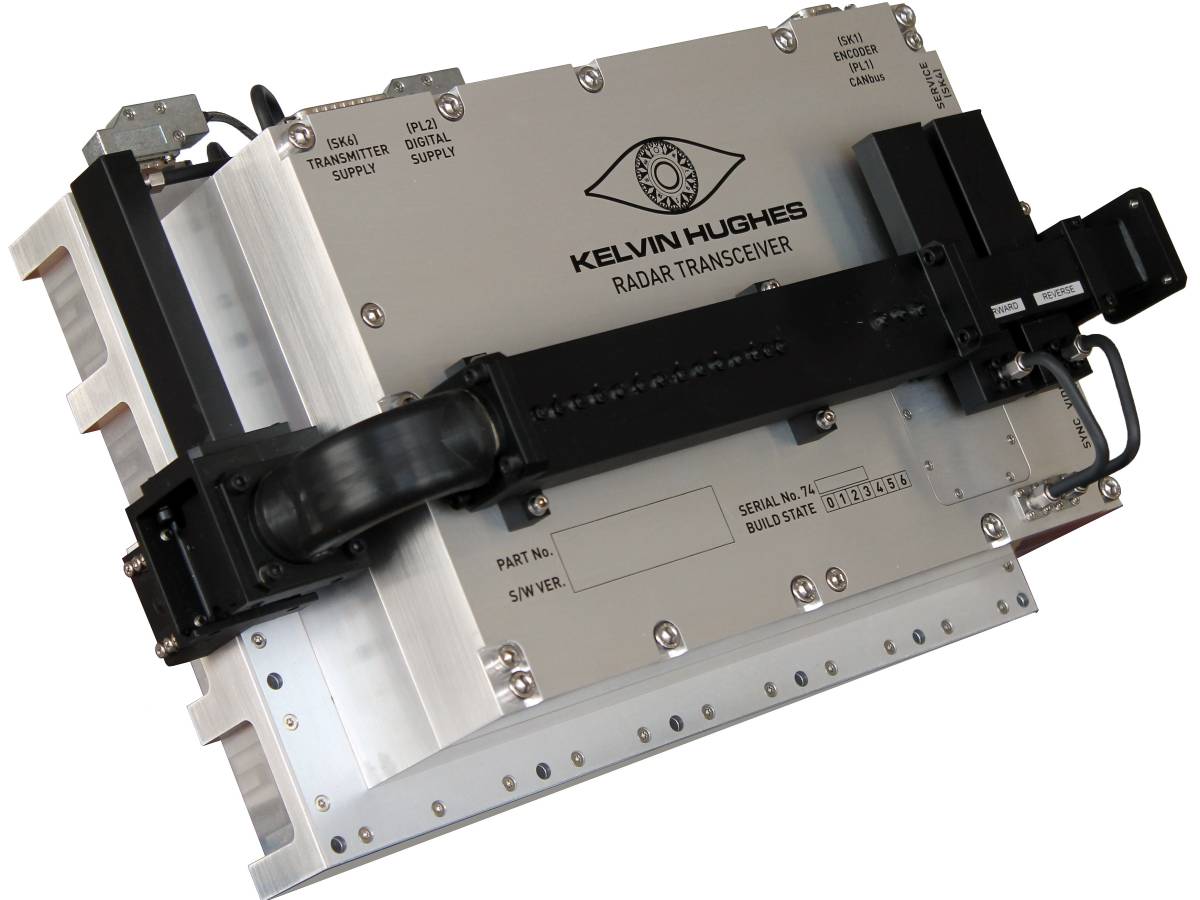SharpEye™ Naval Radar Transceiver
Description of the radar set, tactical-technical characteristics

Picture 1: Antenna and turntable of the SBS-800, one of the possible sensors for the SharpEye™ radar system

Picture 1: Antenna and turntable of the SBS-800, one of the possible sensors for the SharpEye™ radar system
| Specifications | |
|---|---|
| frequency: | I- and E/F-Band |
| pulse repetition time (PRT): | |
| pulse repetition frequency (PRF): | 350 … 3000 Hz |
| pulsewidth (τ): | 50 … 400 ns |
| receive time: | |
| dead time: | |
| peak power: | 200 W |
| average power: | 20 … 25 W |
| instrumented range: | |
| range resolution: | |
| accuracy: | |
| beamwidth: | 1.8 degrees |
| hits per scan: | |
| antenna rotation: | 12, 24 or 46 rpm |
| MTBCF: | |
| MTTR: | |
SharpEye™ Naval Radar Transceiver
The SharpEye™ I- and E/F-Band transceivers are new generation navigation and short-range tactical surveillance radars exceeding the enhanced performance requirements mandated by the International Maritime Organization (IMO) under the Radar Performance Standard IEC 62388.
The I Band SharpEye™ will replace the existing Type 1007 and similar I Band navigation radars which are in service in both surface warships and logistics vessels. Compared with a conventional (non-coherent) I Band navigation radar system, SharpEye™ delivers an improvement in sub-clutter visibility typically in the region of 30 dB, enabling targets with small radar cross-sections (typically 0.5 m²) to be detected even in the presence of heavy sea and rain clutter. This makes it an ideal choice for the early detection of small ‘asymmetric’ targets such as Fast Inshore Attack Crafts (FIACs) and enhances situational awareness and vessel security.
SharpEye™ uses a solid-state power amplifier with a peak output power of about 170 W and a duty cycle of 10%. It transmits relatively long internally modulated pulses in order to illuminate targets with sufficient energy for detection. To provide the required short range performance, SharpEye™ transmits a sequence of pulses of differing length, with each pulse optimised to cover a specified but overlapping range bracket. SharpEye™ is able to separate targets from clutter due to their differing radial velocity components. A Doppler filter bank of up to 1024 different filters processes the echoes received from the pulse sequence to extract the radial velocities of targets and clutter alike.

Figure 2: SharpEye™ Transceiver block

